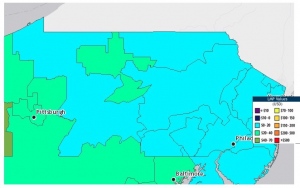Over the previous decade, U.S. wind power has significantly increased, making wind energy the country’s biggest sustainable power source. Today, you’ll find more than 60,000 breeze turbines working across 41 states, Puerto Rico, and Guam. These have a consolidated limit of a marvelous 109,919 megawatts, as indicated by the American Wind Energy Association. With such countless inquiries regarding the utility and cost-adequacy of environmentally friendly Electricity Rates power sources, it’s normal to be interested with regards to the feasibility of renewables. Peruse on as we examine wind energy (additionally called breeze power), alongside how wind turbines produce power to drive homes and different spots all over the planet.
Definition of wind
Regardless you call it, the wind is the development of air caused because of contrasts in pneumatic stress it’s something you can’t see, however, most certainly feel. While it may appear as though a straightforward piece of the normal world, the wind is contained elaborate components.

How Does Wind Work?
You might have seen individuals use heading and speed to depict wind. This is because the breeze is the whirlwind made by gases moving from high-pressure regions to low-pressure regions. The higher the strain angle power (also known as the distinction between the tensions), the quicker the breeze age and the more strong its power is.
There’s likewise something known as the Coriolis Effect that makes wind move at a bend rather than a straight line. It’s an impact where the turning flows of air experience a power known as the Coriolis power, which acts opposite to the bearing of movement and the hub of revolution.
How Is Wind Made?
The wind is brought about by contrasts in climatic tension. The sun’s beams warm both the Earth’s surface and the environment. While a few pieces of the planet experience a hotter environment as they get the immediate beams of the sun, different parts are colder since they get roundabout sunbeams. Likewise, the air we inhale contains countless small particles. The heaviness of every one of these particles is stacked on top of one another, having a gauging impact on the Earth’s surface. This makes something known as air pressure.
Environmental tension is a power that changes as indicated by how warm or cold the outer layer of the Earth is. For example, when the surface heats up, the air nearest to the surface will likewise become hotter. This, thusly, will make the particles rise upwards and in the long run, spread out. At the point when the hotter air begins to rise, the virus air particles begin to sink into these low-pressure regions. It’s this development of air particles that make the breeze. Despite prevalent thinking, humanity has involved breeze as a substitute for electric power for a long time. Indeed, it’s the principal man-made technique for the clean energy age. Yet, how did individuals start tackling the force of the breeze? Windmills.
The power of wind
Not at all like petroleum derivatives, is wind energy an economical, sustainable power source. Petroleum derivatives, when consumed to create energy, can add to environmental change because of the arrival of carbon dioxide. While many homes have as of now begun to utilize sun-oriented power, wind energy (at times called winery) is additionally acquiring prevalence.






